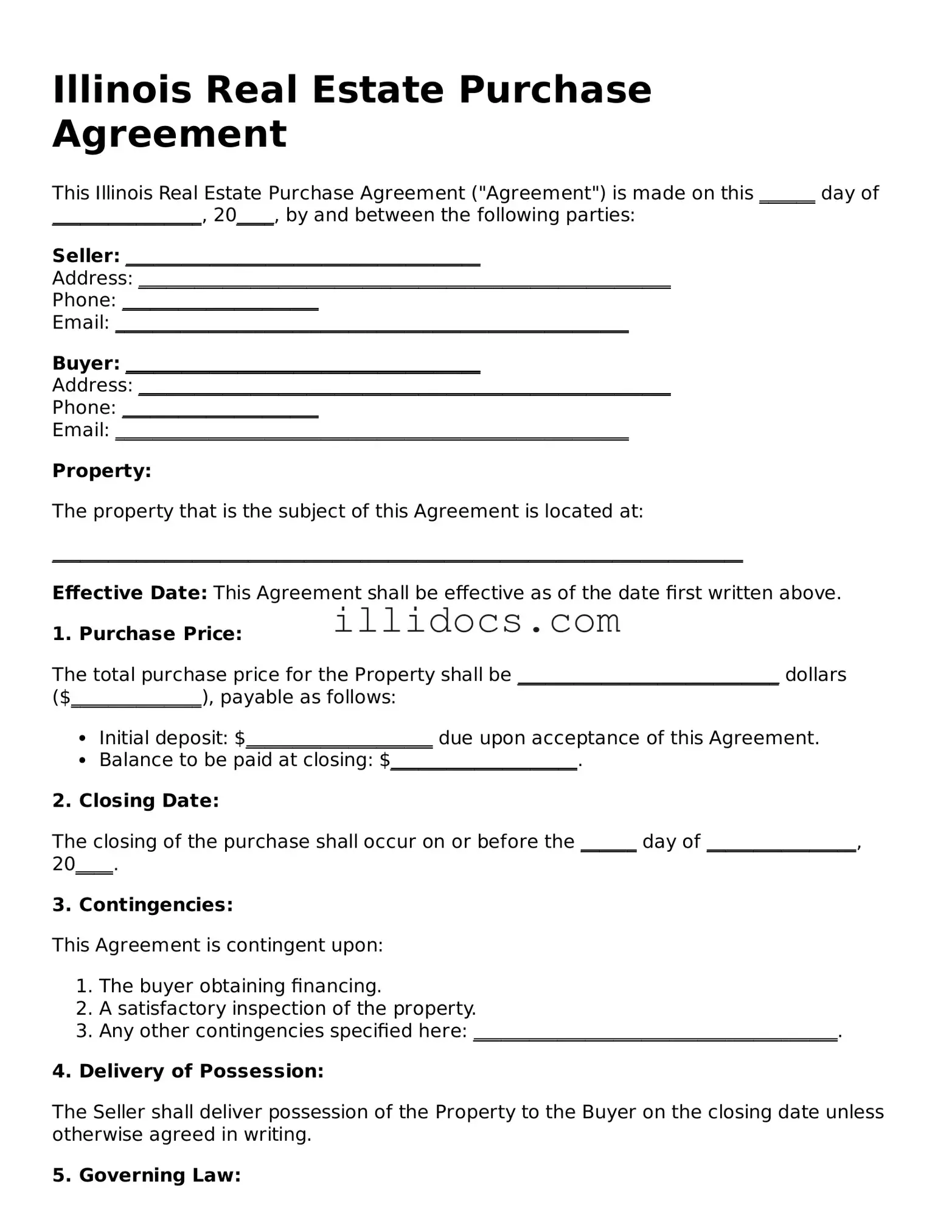What is the Illinois Real Estate Purchase Agreement?
The Illinois Real Estate Purchase Agreement is a legal document used when a buyer and seller agree to the sale of a property. This form outlines the terms of the sale, including the purchase price, closing date, and any contingencies that must be met before the sale is finalized.
Who needs to use this agreement?
Both buyers and sellers in a real estate transaction in Illinois should use this agreement. It helps ensure that both parties understand their rights and responsibilities throughout the process. Using this form can help prevent misunderstandings and disputes later on.
What key information is included in the agreement?
The agreement typically includes the property address, purchase price, earnest money deposit, closing date, and any contingencies, such as financing or inspections. It may also address items like repairs and seller disclosures.
Can I make changes to the agreement?
Yes, changes can be made to the agreement. Both parties must agree to any modifications, and it’s best to document these changes in writing. This ensures that everyone is on the same page and helps avoid confusion.
What happens if one party does not fulfill their obligations?
If one party does not meet their obligations as outlined in the agreement, the other party may have legal options. This could include seeking damages or specific performance, which means forcing the party to complete the transaction as agreed. Consulting a legal expert can provide guidance on the best course of action.
Is an attorney necessary to complete this agreement?
While it is not legally required to have an attorney, it is often advisable. An attorney can help ensure that the agreement is properly filled out and that your interests are protected. They can also provide advice on local laws and regulations that may affect the transaction.
What is earnest money, and why is it important?
Earnest money is a deposit made by the buyer to show their commitment to purchasing the property. It is typically held in escrow until closing. If the buyer backs out without a valid reason, the seller may keep the earnest money as compensation for taking the property off the market.
How do contingencies work in this agreement?
Contingencies are conditions that must be met for the sale to proceed. Common contingencies include financing, home inspections, and appraisals. If a contingency is not met, the buyer may have the right to back out of the agreement without losing their earnest money.
What should I do after signing the agreement?
After signing the agreement, both parties should keep a copy for their records. The next steps typically include fulfilling any contingencies, preparing for closing, and working with real estate agents or attorneys to ensure a smooth transaction.
Where can I obtain the Illinois Real Estate Purchase Agreement form?
The form can be obtained from various sources, including real estate agents, legal websites, or local real estate associations. It is important to ensure that you are using the most current version of the form to comply with Illinois laws.
